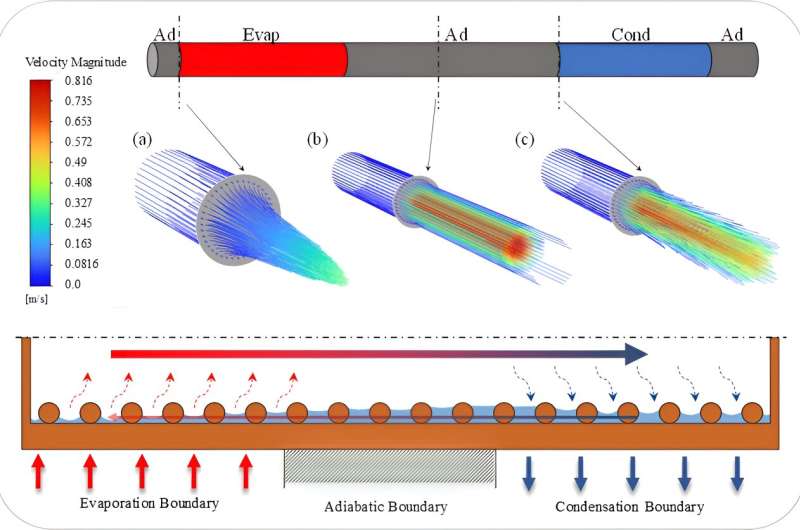This article has been reviewed according to Science X's editorial process and policies. Editors have highlighted the following attributes while ensuring the content's credibility:
fact-checked
trusted source
proofread
Novel model helps analyze phase transition heat transfer in heat pipes

A research group led by Prof. Yu Dali from the Hefei Institutes of Physical Science of the Chinese Academy of Sciences (CAS), together with researchers from the City University of Hong Kong, has developed a transient 3D computational fluid dynamics model to investigate the liquid-vapor flow and heat transfer for a water heat pipe under various non-uniform loads. The study was published in Annals of Nuclear Energy.
Heat pipes are highly efficient heat transfer devices that utilize the phase transition of a working fluid to achieve high-flux heat transfer. Compared to conventional metals, the heat transfer efficiency of heat pipes is tens or even hundreds of times higher. As a result, heat pipes have found applications in various fields that require high-density heat transfer, including heat export from the core of small solid-state reactors, radiative radiators, fusion reactor divertors, and advanced electronic components.
In this study, the researchers developed the 3D transient heat pipe model using FLUENT software. The model was validated by comparing its results with experimental data obtained under both uniform and non-uniform heating conditions. The comparison showed an error rate of up to 4.73%.
With this model, the circumferential flow characteristics of the heat pipe at the wick region under non-uniform heating conditions were observed for the first time using numerical methodology.
What's more, the researchers examined how the length of the adiabatic section, the heating power, and the heating range affected the thermal-hydraulic properties of the heat pipe when it was loaded in different ways.
They found that the heat pipe started up much faster when the heating power was increased or the length of the adiabatic section was reduced. They proved that lowering the circumferential heating range didn't change the start-up time.
In addition, uneven heating power in the horizontal direction caused the spot on the wall with the highest temperature to tilt toward the spot with the highest power. On the other hand, when the heat pipe was heated evenly, the temperature on the wall was the lowest.
"Our results provide valuable theoretical support and analytical tools for further research and development of high-profile heat pipes," said Prof. Yu Dali.
More information: Jian Liu et al, Numerical analysis of transient heat and mass transfer for a water heat pipe under non-uniform heating conditions, Annals of Nuclear Energy (2023). DOI: 10.1016/j.anucene.2023.110036















